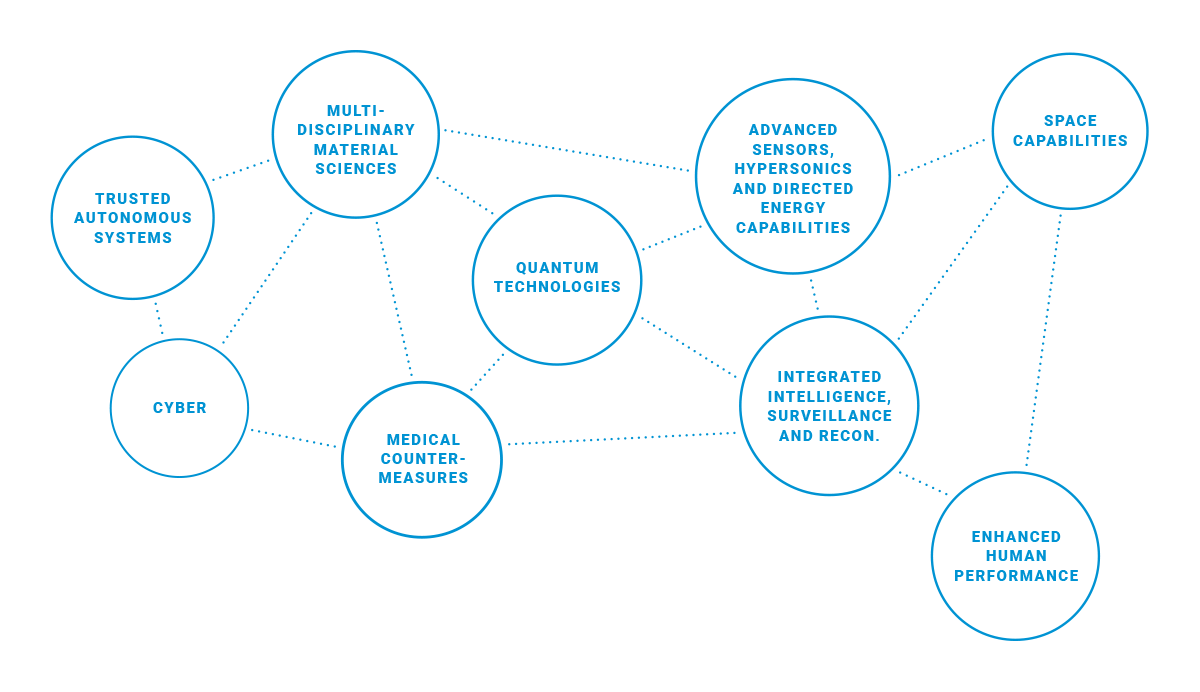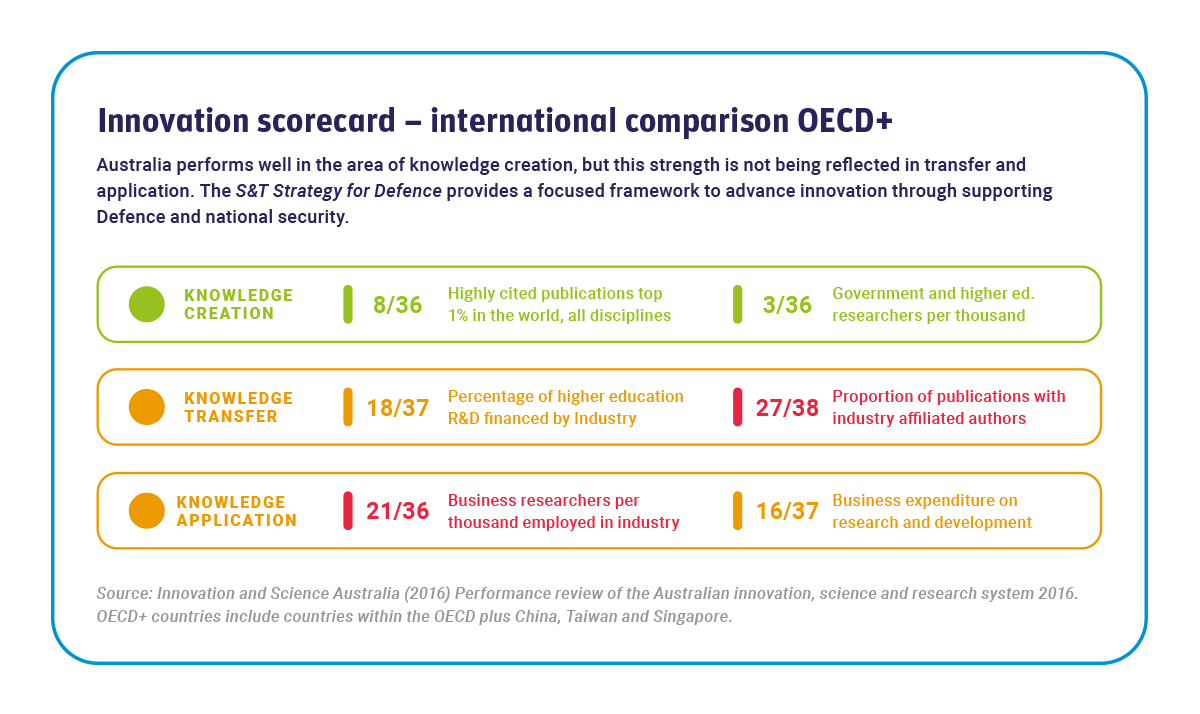Context

The rapid rate of technological change, the globalisation and democratisation of technology, and an expanding diversity of threats to Australia’s defence and national security mean that harnessing S&T has never been more important.
Australia faces a challenging and contested security environment over the next decade, where our determination to protect our interests will be tested more frequently. The 2016 Defence White Paper identified key drivers shaping Australia’s security outlook, including: the changing relationship between the United States and China, which is likely to be characterised by a mixture of cooperation and competition; challenges to the stability of the rules-based global order; the growing threat from terrorism and foreign fighters to Australia’s security; state fragility, including in our immediate region; the increasing pace of military modernisation in our region; and increasing threats in cyberspace and space.
In response, the Federal Government is investing in an Australian Defence Force (ADF) that is more agile, capable and potent, with a broader range of capabilities. The government will ensure the ADF remains regionally superior, with the highest levels of military capability and technological sophistication.
Defence’s international relationships underpin this effort, particularly S&T partnerships, which are important diplomatic instruments. Through S&T collaboration, systems that are under development can be appropriately tailored to meet Defence’s unique needs and new technological concepts can be explored.
There are some Defence capabilities that must be developed domestically, because overseas sources may not provide the assurances we need or the capability requirement might be unique to Australia. Through the 2018 Defence Industrial Capability Plan, the government is committed to growing Australia’s ability to operate, sustain and upgrade Defence capabilities with the maximum degree of national sovereignty. A well connected, informed and vibrant Defence S&T enterprise will be critical to this objective.
Australia benefits from having an industrial base comprising a large number of agile small to medium enterprises (SMEs), strengthened by a core group of global companies with access to international networks, supply chains and export markets. Together, Australian industry has a notable record of accomplishment, producing some of the world’s most innovative Defence technologies.
Australian universities have become large enterprises that successfully compete on the international stage as centres of undergraduate teaching excellence. The last decade has seen a focus on research excellence, and our universities have embraced this challenge, generating world-class, investigator-driven outcomes. They have also built very successful postgraduate training programs, providing an opportunity to inspire a large community of researchers with mission-directed research focused on Defence impact.
The government has demonstrated its commitment to innovation and to strengthening the national innovation sector through the initiatives of Innovation and Science Australia’s Australia 2030, Prosperity Through Innovation. Defence has led by establishing the Centre for Defence Industry Capability, the Next Generation Technologies Fund (NGTF) and the Defence Innovation Hub. Australian companies and universities have embraced the opportunities and challenges presented through these programs. It is important to build on this investment to ensure good ideas are matured into Defence capability, and to contribute to the growth of Defence’s innovation partners.
In response to the 2015 First Principles Review (FPR) recommendation that DST articulate its value proposition, an independent analysis of 10 project case studies over the period 2003 to 2015 “conservatively assessed the tangible economic benefits of DST Group’s research and support associated with the ten case studies as being approximately $5.1 billion” and concluded that an extension of the analytical approach across DST would show economic benefits of $20 billion to $25 billion.
The FPR also recommended strengthening DST’s partnerships. The challenge now is to increase scale through focusing these partnerships on a smaller number of bigger research goals in order to deliver more impact.



